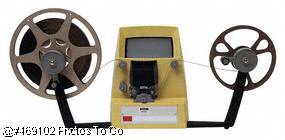You've done your audio, you've off-lined your video or done a great paper cut, you've done the graphics,
you've got the spot down cold in your head...now it's time to make it a reality. If you've done all that, you don't really
need to read any further.
For the rest of you, before we get into the wonderful world of post, let's go back to the promo #1 rule
which the boyscouts claim they thought of first. BE PREPARED. If you go into an edit suite and have no idea what you're going
to make...chances are, you aren't going to make greatness. It doesn't matter what facilities your place has...always be prepared.
If you don't have the ability to off-line your spot first, or make an edl...then do a paper cut by time code. Know exactly
what goes where and in what order...as close as you can...doesn't have to be frame specific, but it wouldn't hurt.
There's few things that piss me off, but one of them is when I find a producer viewing their tapes for the
first time during an edit session. You've got an editor sitting there waiting on you, you've got a boss and channel counting
on you...if you gave a shit, you would know what you were doing instead of wasting other people's time. At the very least,
you would have made an effort.
So...in case that wasn't clear enough...before you come this far....go through all your elements and figure
out what you'll use and what you won't. Keep notes and a log of where those shots are. If you have an off-line, a crash suite,
a vhs2vhs system, a non-linear...then cut it there. This is not the final deal...this is you being prepared. This is you figuring
out if what you've got is going to work. This is you experimenting. This is your job.
Now while you're in this stage, maybe you've made something that you're proud of. Maybe you've made something
you're not sure of. Maybe you need a little advice of how to make it better. After a few hours with your face 12 inches away
from a monitor, its not that easy to be objective either. Stand up, breathe...walk away, have a coffee. Give it a rest and
let your brain clear. Then take another look. Better, go and grab someone whose opinion you trust and have them look at your
spot. Listen to what they say, what their comments are. You don't have to do what they suggest...but this is someone looking
at your spot for the first time...just like a viewer would be at home. Their impressions and suggestions could be very valuable...they
may give you an even better idea of how to proceed...or they might want to make you kill yourself...either way, something's
happening. Best of all, when you've got something that's taken shape...go and get the editor you are going to be working with
and have them take a look. This is the guy who is going to help you make this into he greatest piece of art on-air. He's there
for 2 reasons...to see what he has to work with and to have an idea of how to make it better long before you're wasting production
time...and because he does this for a living and more than likely he'll have a few ideas of his own of how you can improve
your spot right there and then. And all of this has happened before you've taken one step into the edit suite.
DO NOT USE THAT EFFECT!
One thing that reeks of rookie is overdone effects. Leave the ADO/DVE alone. Try...just try...please...to
make your spot without it. Try editing instead of 'paper-turns' or 'slides'.
YOU DO NOT KNOW MORE THAN THE EDITOR
You are working with somebody who sits with that gear in a dark cave 12 hours at a time. Chances are he's
seen some good work and some shit in his time. His job is to help you do your job...but your job is to give him something
to improve in the first place. If you seriously ask him to make the cut 'one frame' sooner...he'll know you are an idiot.
That is not to say that you can't experiment, please by all means...but don't pretend you know the gear better than him. Soft
cuts aren't needed if you've cut your spot properly in the first place. Above all...NEVER snap your fingers to demonstrate
an edit point, NEVER go up to a monitor and put your finger where you want the graphics to be, NEVER diss his advice.
LEARN TO APPRECIATE THE ART OF EDITING
Some of the best directors on the planet started out as editors, Lucas included. Before they created visuals,
they understood perfectly how visuals can go together...and how they can't. Very good and cheap softwear is available on the
market these days...imovie, final cut pro, director, media 100, avid...get one, play with it until you are good at it, learn.
TALK TO YOUR EDITOR
I find it bizarre that a lot of people don't. I've worked in places where editors and I don't even speak
close to the same language and managed to come out with an excellent product...BECAUSE WE COMMUNICATED AND UNDERSTOOD EACH
OTHER. You are working in a visual medium which has a language of its own. Editors, when allowed, can be the masters of that
medium. They are not your slaves...they are your partners. Even if you've made something great on an .edl, chances are it
can still be slightly improved through a good editors eye. But if you give the impression you don't want that input, you aren't
going to get it. It could be the difference between great and greatness. If, on the other hand, the editor is Attila the Hun...then
you'll just have to roll with it.
Anyway...before your edit...make the effort to talk your editor through what you want to do, show him your
off-line, show him your graphics, show him your references. It will not hurt. You have made the effort, and if he's any good
he will make that same effort for you.




